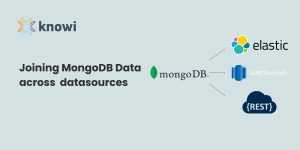Have you ever faced the challenge of training a machine learning model only to discover that the training data exceeds the capacity of your machine? Or perhaps you’ve initiated an SQL query, realizing hours later that it will have to run through the night? One solution might be to invest in more powerful hardware or to patiently await the completion of your SQL query. However, as training data volumes continuously expand and databases swell to encompass millions of rows, a more efficient solution becomes necessary. Enter Apache Spark.
Apache Spark offers a streamlined and cost-effective approach to tackling large-scale data challenges.
What is Apache Spark?
Developed in 2009 at UC Berkeley’s AMPLab by Matei Zaharia, Apache Spark has evolved significantly from its inception. It was open-sourced in 2010, handed over to the Apache Software Foundation in 2013, and by 2014, it had graduated to a top-level project. Today, it stands as one of the most active and popular projects in the big data realm.
But what exactly is Apache Spark? It’s a unified analytics engine designed for large-scale data processing. It addresses many of the limitations of its predecessor, the MapReduce framework used in Hadoop, particularly around speed and method of processing.
Apache Spark Architecture and Ecosystem
How Apache Spark Works
Apache Spark is fundamentally built on the concept of the Resilient Distributed Dataset (RDD). RDDs are a collection of read-only objects distributed across a computing cluster. They are immutable collections of objects that can be operated on in parallel across a cluster of machines. RDDs are also fault-tolerant, meaning that if an executing node fails, the data can be rolled back to the original state using simple transformations. The magic of Spark lies in its ability to process these RDDs entirely in memory, leading to far quicker data processing speeds compared to disk-based processing.
Spark’s architecture consists of a driver that initiates the Spark context, which orchestrates tasks across the cluster. Tasks are managed through a Directed Acyclic Graph (DAG) that maps out the sequence and dependencies of the multitude of operations that can be performed on RDDs. The actual computation on data happens in executors which are distributed across nodes in the cluster.
Core Components
- Spark Core: At the heart of Spark, this component is responsible for basic I/O functionalities, distributing and monitoring jobs across various nodes, and fault recovery.
- Spark SQL: Allows users to perform SQL queries and data manipulations as seamlessly as they would in a traditional relational database setting.
- Spark Streaming: Facilitates real-time data processing, allowing developers to handle live data streams effectively.
- MLlib: A library for performing machine learning in Spark, providing various tools for classification, regression, clustering, and more.
- GraphX: Enables graph processing, which can be pivotal for applications requiring analyses of relationships between various entities.
Execution Workflow
Spark’s execution model is distinct and highly efficient:
- Driver Process: The master control that converts user code into multiple tasks that can be distributed across the cluster. It schedules these tasks and manages their execution.
- Executor Processes: These are the workers that run the tasks assigned by the Driver and return the results.
Spark’s Relation to Hadoop
While Spark can run independently, it is often associated with Hadoop as it can utilize the Hadoop Distributed File System (HDFS) for data storage. Hadoop’s YARN can also be used as a cluster manager for Spark. However, Spark doesn’t require Hadoop to function and can be run using other cluster managers like Apache Mesos, Kubernetes, or even on cloud platforms such as Amazon EMR, Google Cloud Dataproc, and Microsoft Azure HDInsight.
Comparing Spark to Other Big Data Solutions
Spark’s main advantage over other big data technologies like traditional MapReduce is speed—thanks to its in-memory data processing—and ease of use. It supports multiple programming languages such as Scala, Java, Python, and R, making it a versatile tool for developers.
Is Spark Right for Your Data Architecture?
Incorporating Spark into your data architecture can be highly beneficial if your workloads involve complex operations that need to be fast and are iterative in nature, such as machine learning algorithms and real-time data processing. The main consideration, however, is resource management, as Spark’s in-memory processing can be quite RAM-intensive.
Conclusion
Apache Spark has significantly simplified the complexities of big data processing. By providing a robust, scalable, and efficient framework, Spark has become a cornerstone technology for organizations aiming to harness the full potential of their data assets. Whether it’s through streaming analytics, machine learning, or simply large-scale data processing, Spark’s architecture offers a comprehensive solution that adapts to the diverse needs of modern data-driven enterprises. As we continue to generate data at unprecedented rates, technologies like Spark will play a pivotal role in turning this data into actionable insights.
At Knowi
For more advanced use cases in which you need to join and blend your Apache Spark data across multiple indexes and other SQL/NoSQL/REST-API data sources, check out Knowi. This analytics platform natively integrates with Apache Spark and is accessible to technical and non-technical users. You can then use the dashboard and widget features to build custom visualizations that simplify your data and make them presentable. Still trying to understand? Book a demo today with Knowi and embark on a transformative analytics journey.






